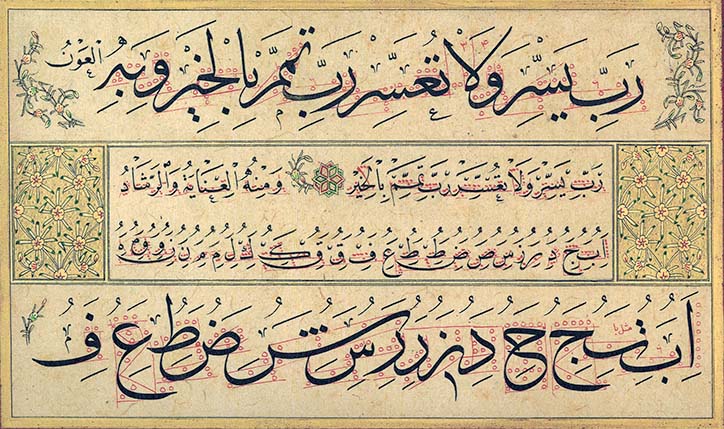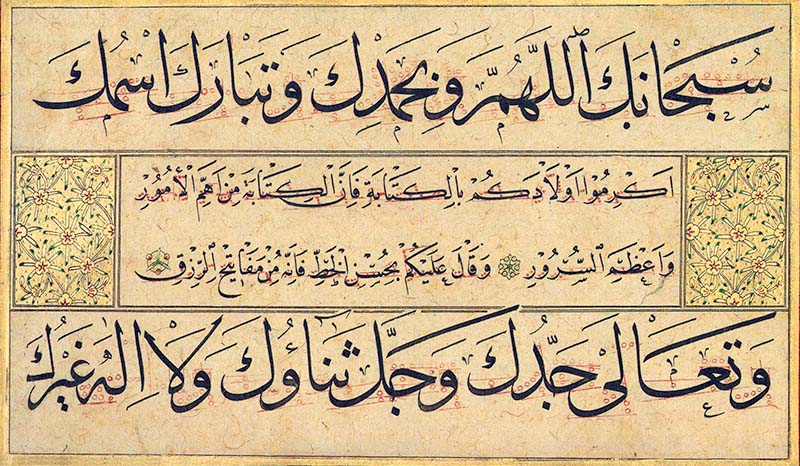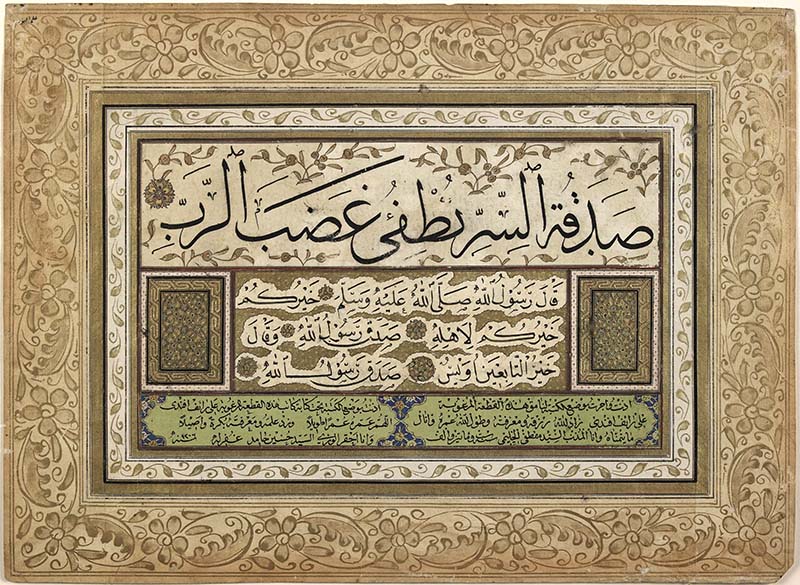Learning stages
Mufraddat: “Detached letters”
Independent and paired letter forms
In this series of 15-20 lessons you will learn 1) how to write each letter in its independent form (remember, a letter in the Arabic script can have up to four different forms) and 2) how to write all the various letter pairings (B+A, B+B, B+C, etc.) Since letters in the Arabic script change shape depending on where they fall within a word, paired letters may look quite different from their independent counterparts.
Rabi Yasir: The starting sentence
Even prior to learning how to write the alphabet, your teacher may have you copy a supplication in Arabic called the “Rabi Yasir.” This phrase means, “Lord, make it easy and not difficult. Lord, make it result in good.” You may also be assigned to write the bismillah, an Islamic phrase used when embarking on significant endeavors, meaning, “In the name of God, most gracious, most compassionate.” Since calligraphy was historically a religious practice, these phrases were adopted by calligraphers to put them in a reverent frame of mind before writing. These phrases also give you a hint of what is to come in future lessons.

Murakkabat: “Assembled letters”
Words and phrases
By now, you have developed some good basic skills with your pen. You’re familiar with all the letter forms, and you’re ready to work on words and sentences beyond the Rabi Yasir and the bismillah.
During the Murakkabat stage, you will be assigned texts, usually poems, so you can practice putting words and phrases together. You will also copy the work of a great master. By copying from the best, your own skills will improve.
The famous Persian calligrapher, Mīr ‘Alī of Herāt (d.1556), gave the following advice to those embarking on the task: ‘The calligrapher needs five things: a fine temperament, an understanding of calligraphy, a good hand, the ability to endure pain and a perfect set of implements.
From: Ja’Far, Mustafa. Arabic Calligraphy: Naskh style for beginners. New York: McGraw-Hill, 2002.

Ijaza: “License”
Certification
When your teacher feels you’re ready, you will begin working on your “ijaza,” or “license.” This is a formal work of calligraphic art. When completed, your teacher and several other master calligraphers will sign it, giving you permission to teach and work independently.
Traditionally, the teacher receives no payment for lessons and does not give grades, but he or she is responsible for introducing you to other calligraphers.
Attaining an ijaza is a great feat. But even after you have reached this stage, you are not finished learning. Though you are now considered a master in whatever scripts you studied, you will continue to practice and improve, and will keep learning as long as you live.
